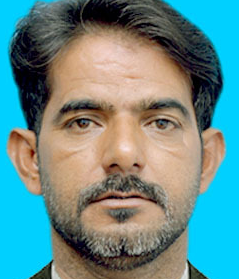خلاصہ
Diverse background in community development and public health initiatives, spanning various roles and organizations in Pakistan. have experience in roles such as Social Organizer, Hygiene Promoter, Human Resource Development Officer, cash voucher assistant officer, where I have demonstrated skills in community engagement, needs assessment, beneficiary selection, information dissemination, capacity building, monitoring, and evaluation.
In their recent roles as a Social Organizer with Qatar Charity and ACTED Pakistan, they focused on implementing cash disbursement programs, ensuring transparency, fairness, and community empowerment. They engaged with communities, assessed needs, selected beneficiaries, disseminated information, built capacities, and monitored project progress.
Previously, I served as a Hygiene Promoter with Health And Nutrition Development Society (HANDS), emphasizing public health education and awareness regarding hygiene practices.
experience also includes work as a Human Resource Development Officer with Sindh Rural Support Organization (SRSO), where were involved in poverty alleviation programs, community mobilization, capacity building, and administrative tasks.
Additionally, worked as a Community Mobilizer with HANDS Pakistan, focusing on improving nutrition outcomes through community engagement, behavior change,WASH, capacity building, collaboration, monitoring, evaluation, and advocacy.
Overall, I possess a rich skill set in community development, public health promotion, project management, and capacity building, contributing significantly to the welfare and empowerment of communities in Pakistan.
پراجیکٹس
تجربہ
Cash Voucher Assistance (CVA) officer
Identifying criteria for selecting beneficiaries who will receive cash or vouchers.
Selecting appropriate methods for delivering assistance (e.g., mobile money, vouchers, direct cash transfers).
Setting transfer values aligned with project objectives.
Incorporating beneficiary preferences and ensuring their active involvement in decision-makin
Regularly monitoring the CVA program’s progress and impact.
Assessing the efficiency and cost-effectiveness of the assistance provided.
Keeping track of market dynamics to ensure the effectiveness of cash and voucher interventions. collaborates with various stakeholders:
Working closely with other teams within the organization.
Coordinating with government actors, private sector partners, and other humanitarian organizations.
Building and maintaining partnerships to enhance the overall impact of CVA.Engaging with beneficiaries, collecting feedback, and continuously improving the program based on community input.

Social Organizer
1. Community Engagement The social organizer engages with the community, building relationships and fostering trust. They communicate project objectives, benefits, and eligibility criteria to community members.2. Needs Assessment They conduct assessments to identify the specific needs and vulnerabilities of individuals and households within the community. This helps ensure that the cash disbursement is targeted to those who need it most.3. Beneficiary Selection Based on the needs assessment, the social organizer helps in selecting eligible beneficiaries for the cash transfer program. They ensure transparency, fairness, and adherence to project guidelines during the selection process.4. Information Dissemination The social organizer is responsible for effectively communicating information about the cash disbursement program to beneficiaries. They provide clear instructions on how to access and utilize the funds.5. Capacity Building They may organize training sessions or workshops to enhance the financial literacy and money management skills of beneficiaries. This empowers them to make informed decisions regarding the use of the cash assistance.6. Monitoring and Evaluation The social organizer monitors the progress and impact of the cash disbursement project. They collect feedback from beneficiaries, address any concerns or challenges, and report on the outcomes achieved.Overall, the social organizer plays a vital role in ensuring the effective implementation of the cash disbursement transfer project, promoting transparency, community engagement, and empowering beneficiaries.
Social Organizer
1. Community Engagement The social organizer engages with the community, building relationships and fostering trust. They communicate project objectives, benefits, and eligibility criteria to community members.2. Needs Assessment They conduct assessments to identify the specific needs and vulnerabilities of individuals and households within the community. This helps ensure that the cash disbursement is targeted to those who need it most.3. Beneficiary Selection Based on the needs assessment, the social organizer helps in selecting eligible beneficiaries for the cash transfer program. They ensure transparency, fairness, and adherence to project guidelines during the selection process.4. Information Dissemination The social organizer is responsible for effectively communicating information about the cash disbursement program to beneficiaries. They provide clear instructions on how to access and utilize the funds.5. Capacity Building They may organize training sessions or workshops to enhance the financial literacy and money management skills of beneficiaries. This empowers them to make informed decisions regarding the use of the cash assistance.6. Monitoring and Evaluation The social organizer monitors the progress and impact of the cash disbursement project. They collect feedback from beneficiaries, address any concerns or challenges, and report on the outcomes achieved.Overall, the social organizer plays a vital role in ensuring the effective implementation of the cash disbursement transfer project, promoting transparency, community engagement, and empowering beneficiaries.

Hygiene Promoter
To promote and educate others about good hygiene practices. They work to raise awareness about the importance of hygiene and help individuals and communities adopt healthy habits. Hygiene promoters may provide information on proper handwashing, sanitation, personal hygiene, and other practices that contribute to overall health and well-being. They may conduct training sessions, distribute educational materials, and work closely with communities to address hygiene-related challenges. The goal of a hygiene promoter is to empower individuals and communities to make informed choices and take actions that improve their hygiene practices. It's a vital role in promoting public health and preventing the spread of diseases.

Hygiene Promoter
Conduct baseline and end line survey.Formation of Muhala Wash committes & school WASH Committes.Train local MWCs implementation of all activities.Initiate BBC in Urban Targeted areas.Facilitate community Mobilization, meeting & training during community led urban sanitation activities.
human Resource Development Officer
1. Working in Government of Sindh Funded Poverty alleviation (PPRP) People Poverty Reduction Program in privilege areas of Sindh.
2. team leading watch out administratively to Social Mobilization team SMT
3. Form Community Based Organizations CO , VO, LSO,
4. conduct Poverty score card Survey to rural areas
5. implement program components under poverty score card PSC,
6. Coordinates community based events and Meetings
7. Knowledge of MS office experience creating Excel Databases and PowerPoint presentation for top executives.
8. arrange & conduct community based trainings workshops to enhance the capacity of rural based women
9. develop well managed office decorum
social orgnizer
In a nutrition project, a community mobilizer is responsible for actively engaging and mobilizing the community to improve nutrition outcomes. Their job description may include1. Community Awareness The community mobilizer raises awareness about the importance of nutrition and its impact on health and well-being. They educate community members about the benefits of a balanced diet, proper nutrition practices, and the prevention of malnutrition.2. Behavior Change They work to promote positive behavior change within the community by encouraging the adoption of healthy nutrition practices. This may involve conducting training sessions, workshops, and awareness campaigns to promote healthy eating habits.3. Capacity Building The community mobilizer may organize training programs to enhance the knowledge and skills of community members regarding nutrition. This empowers individuals to make informed choices and take actions that improve their own nutrition and that of their families.4. Collaboration They collaborate with local organizations, community leaders, and stakeholders to coordinate efforts and resources. This ensures a holistic and sustainable approach to addressing nutrition challenges within the community.5. Monitoring and Evaluation The community mobilizer monitors the progress and impact of the nutrition project. They collect data, assess the effectiveness of interventions, and identify areas for improvement.6. Advocacy They advocate for policies and practices that support improved nutrition within the community. This may involve engaging with local authorities, advocating for increased access to nutritious food, and promoting community-led initiatives.
SMC Coordinator
Meeting with School Management committesEnhance enrolment wirh door to door campaign





